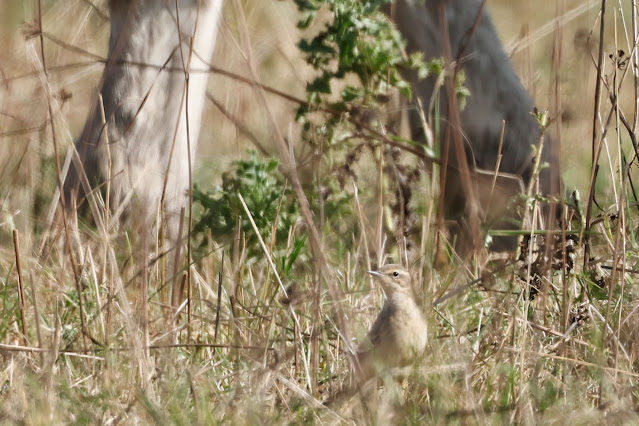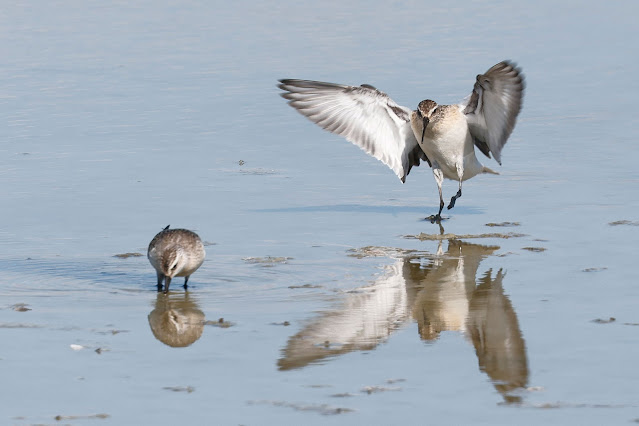Another warm and sunny start, the Indian Summer continues. The tide was still out as I arrived at the lower car park at Farlington and rather than take the sea wall I crossed the field through the bushes towards the stream. One Kestrel evaded me, flying off as I tried to get a better light, when I came across another one I decided to go for the silhouette.
There was very little on the stream and I was also disappointed to see there was no activity in the bushes around the visitor hut. As I walked towards the sea wall I could see good numbers of cattle in the Hay Field. Reaching the fence I could see, distantly, two Cattle Egrets around the cows. As I watched them one flew across the field followed by another.
I walked north a short distance in hope of getting a view of the Cattle Egrets or maybe more Yellow Wagtail, but it wasn't possible, so turned and headed south round the marshes.
Coming past the brick house I noticed a bird perched at the top of a bramble bush, a Whinchat.
I had scanned the dead trees on the island for Osprey with nothing showing, then a large raptor with a pale head passed overhead and I thought immediately Osprey, but on close examination this is a Buzzard and was joined by another with what was more conventional plumage.
With the rising tide the waders were seeking places to roost in the harbour. Here Curlew and Oystercatcher were disturbed by a pair of kayakers who seemingly had no sympathy for the waders and steered close past the waders putting them all up.
At the Lake there were plenty of birds with the usual large Redshank and Black-tailed Godwit roosts. The numbers of duck had also significantly increased with well into the hundreds of Wigeon, all still in eclipse and quite a few eclipse Pintail. I am sure they will not come this close when the winter plumage arrives.
I found four Curlew Sandpiper on the far side of the lake, behind them was a substantial number of Knot.
A group of Grey Plover flew in.
I waited to see if there was any more activity but everything started to settle down, so I decided the best place in the warmth would be a hide so I drove the short journey to Titchfield Haven.
I headed for the Meon Shore Hide and as is usual most of the waders were at the back of the scrape. There had been two Great Egrets present but only one was left, standing amongst the Canada Geese on the far island.
A Pied Wagtail in front of the hide provided some interest for awhile before I settled on this as a "Pied" Wagtail, probably female.
Then something else interesting a Golden Plover on one of the middle islands.
But what I wanted was for the juvenile Curlew Sandpipers to come a little closer. Which is what they did, the first one of the two





































No comments:
Post a Comment